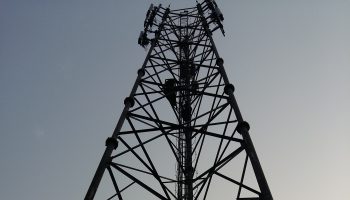 As we are closing in on first quarter of current fiscal, various projects (e.g. Project leap by Airtel) started moving forward on network planning and rollout, as budget for next FY is either getting released or getting freeze. We bring some important stories for readers from last week:
As we are closing in on first quarter of current fiscal, various projects (e.g. Project leap by Airtel) started moving forward on network planning and rollout, as budget for next FY is either getting released or getting freeze. We bring some important stories for readers from last week:
BSNL plans to rollout 4G LTE: Some good news for BSNL subscribers. State owned telecom Operator BSNL, has floated RFP or invited bids for 14 circle 4G LTE services on non-exclusive revenue-sharing model. BSNL has grouped these 14 circles into six zones, and asked bidder to provide bids for each zone. However, according to report, winning bidder allowed to provide services only in three zones. The bids are finalizing by June end and we will keep watch on who gets what in this deal, as competition intensifies. Good luck ‘BSNL’.
Bharti Airtel launches ‘Open Network initiative’: So here is good news for Airtel subscribers in India, as company wanted to bring transparency (or at least it says so!) into Network related issues. I wonder why it did not do this earlier.
There could be two possible reasons for launching ONI now, first- Call drops are soaring, as TRAI has been lashing Opco’s on Call drops, which has impacted Airtel’s ambition (to be most trusted Brand by 2020), and second- to keep competition at bay (Reliance Jio?). Described as part of multibillion-dollar ‘Project Leap’, ONI tries to solve some of the routine network related problems, which Airtel believes are mostly due to either lack of coverage or poor network quality. So any one of you, who visited Airtel’s ONI page, can actually see geo-located information on Airtel’s 2G/3G/4G network coverage, existing towers, towers required area (missing coverage zone) and towers upgraded. However, this information was already available with Airtel Network teams, so I wonder how it will be helping Airtel to solve Network problems. On the other hand, may be at least, Airtel has dared to admit that there is problem (Call drops…?) and let us solve it together (by letting customers know which of the areas still needs fix).
Although there are some third party Android apps, which provide similar information, Airtel’s ONI brings some customization on top of Coverage only maps, by plotting Airtel existing/proposed/required tower information (which is quite easy to do, right?). Nevertheless, it does not diminish the value ONI offers, as Airtel customers can raise network related issues directly from ONI Interface, where-in Airtel’s Customer care executives, equipped with special tools, can troubleshoot problems. We would like to see, how does it happen, and keep watch on ONI initiative altogether.
Reliance Jio data consumption shows promising potential: According to media reports, Reliance Jio, who is yet to launch commercial 4G-LTE Network, has recorded data consumption of whopping 13 million GB in-total (quarterly), which is 30{af589cdba9d77786c8c861317dbad60bba1e2ebbf56e2ffab874a1b59fde9ce3} of Airtel’s current data consumption, pegged at 45 million GB. That is interesting statistics. With these numbers, Jio ranked sixth in data consumption, behind Airtel, Voda and Idea, even before commercial launch of network. With only 700,000 subscribers (as on June), mostly employees and associates, Jio’s 4G Network is under evaluation and testing phase since its officially launch in last year December.
Since last year December, Jio’s retail arm, Reliance Retail, has launched ‘LYF brand’ of 4G-VoLTE capable phones in the market, which has captured 13{af589cdba9d77786c8c861317dbad60bba1e2ebbf56e2ffab874a1b59fde9ce3} of 4G-LTE phone market share. Recently, Jio has officially unveiled company website, and started inviting subscribers for impending commercial launch. Given forecast, Jio is likely to climb few more spots and close the gap with market leaders Airtel-Voda-Idea very soon. Let us watch this as this is going to be interesting competition.
TV White Space spectrum is for experiments and not for commercial purpose: This week, DoT has clarified that, 470-582 MHz of TV Spectrum, allotted for research purpose and not for commercial usage yet. Earlier COAI, the Cellular Operator’s body has objected DoT allocation of spectrum to Microsoft to carry out experiment on providing broadband to rural India, citing disparity and loss of revenue. DoT has clarified that TVWS spectrum will not be de-licensed and Center will decide on pricing of the spectrum, before doing so.
Although there are no significant implications for any subscribers, the move by DoT will stop all research work going around utilization TVWS for providing Internet services, esp. by Microsoft and few IITs, which is indeed not a good news. We believe irrespective of commercial plans, we need to arrive at consensus for utilization TVWS, as there is hardly any ecosystem built up in band. We would see how DoT plans to auction 700 MHz band spectrum this year, which will in-turn decide fate of TVWS, as both spectrum, needs fundamental ecosystem development for any commercial usage.
India going forward with 5G: Although there’s long way to go, telecom gear makers, Ericsson and Nokia are already in talks with Indian Telcos for setting up ecosystem for testing 5G, esp. various bands to utilize 5G and devices to build around those band. 5G technology, currently under standardization phase, is being tested at various leading facilities across globe, including S.Korea and Japan. Indian Opcos, who might be speculating potential of 5G, are these days busy in rolling out 4G services across India, and we are likely to see some traction on 5G beyond 2018 only.



